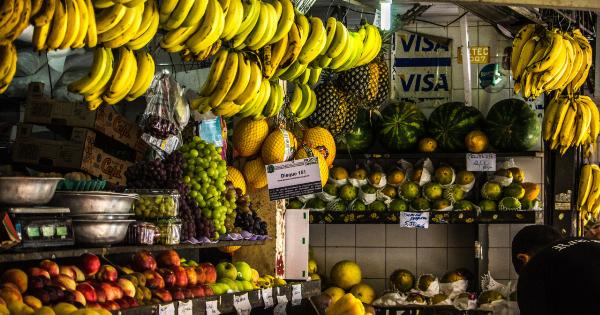Genetic engineering is a process wherein scientists manipulate the genetic material of an organism to enhance or modify its traits. This method has been used in various areas, including agriculture, medicine, and biotechnology.
In terms of agriculture, genetic engineering is used to produce crops that can withstand pests, diseases, and environmental factors.
One of the areas in agriculture where genetic engineering has been beneficial is in producing durable fruits. Fruits are an essential part of our diet, and they contain essential vitamins and minerals that are beneficial to our health.
However, most fruits are perishable, and they have a short shelf life. This means that they are susceptible to spoilage, and they have to be consumed soon after they are harvested.
What is Genetic Engineering?
Genetic engineering is the process of manipulating the DNA of an organism in the laboratory. DNA contains the genetic information that determines the traits of an organism.
By manipulating the DNA, scientists can introduce new traits into an organism, or they can enhance or modify existing traits. Genetic engineering is used in various areas, including agriculture, medicine, and biotechnology.
How Genetic Engineering is Used in Agriculture
In agriculture, genetic engineering is used to produce crops that are resistant to pests, diseases, and environmental factors. This is achieved by introducing specific genes into the DNA of crops, which make them resistant to these factors.
Genetic engineering is also used to produce crops that have a higher yield and are more resistant to herbicides and other weed control measures.
Genetic engineering has been used to produce several durable fruits that have a prolonged shelf life. These fruits include tomatoes, bananas, and strawberries.
Durable Tomatoes
Tomatoes are one of the most widely consumed fruits in the world. However, they are susceptible to spoilage, and they have a short shelf life. Scientists have used genetic engineering to produce tomatoes that have a prolonged shelf life.
The first genetically engineered tomato was produced in the 1990s. The tomato was modified by introducing a gene that delayed the fruit’s ripening process. The gene was taken from a bacterium that produced an enzyme called ACC synthase.
The enzyme is responsible for converting a precursor of ethylene into ethylene, which is a gas that triggers the ripening process in fruits.
By introducing the gene into the tomato, scientists were able to delay the ripening process, which extended the fruit’s shelf life.
The genetically engineered tomato had a shelf life of up to 10 days, compared to the traditional tomato, which had a shelf life of up to three days.
Durable Bananas
Bananas are one of the most widely consumed fruits in the world. However, they are susceptible to pests and diseases, which can significantly reduce their yield.
Scientists have used genetic engineering to produce bananas that are resistant to pests and diseases, which has increased their durability.
One of the most significant pests that affect the banana crop is the banana weevil. The weevil feeds on the banana plant, which reduces the plant’s yield. Scientists have used genetic engineering to produce a banana that is resistant to the weevil.
The banana was modified by introducing a gene that produces a protein that is toxic to the weevil. The protein is harmless to humans, and it does not affect the taste or nutritional value of the banana.
The genetically engineered banana has been tested in the field, and it has been found to be resistant to the weevil.
The banana has also been found to have a higher yield than the traditional banana, which makes it more economically viable for farmers to grow.
Durable Strawberries
Strawberries are a popular fruit that is consumed worldwide. However, they have a short shelf life, and they are susceptible to pests and diseases.
Scientists have used genetic engineering to produce strawberries that have a prolonged shelf life and are resistant to pests and diseases.
The first genetically engineered strawberry was produced in the 1990s. The strawberry was modified by introducing a gene that delayed the fruit’s ripening process. The gene was taken from a bacterium that produced an enzyme called ACC synthase.
The genetically engineered strawberry had a shelf life of up to 11 days, compared to the traditional strawberry, which had a shelf life of up to five days.
The genetically engineered strawberry was also found to be more resistant to pests and diseases, which increased its durability.
The Pros and Cons of Genetic Engineering
Genetic engineering has many advantages in agriculture, including producing crops that are resistant to pests, diseases, and environmental factors. Genetic engineering can also increase the yield of crops and improve their nutritional value.
However, genetic engineering also has some disadvantages.
One of the main disadvantages of genetic engineering is the potential for unintended consequences.
When scientists manipulate the genetic material of an organism, they can unintentionally introduce new traits that could have a detrimental effect on the organism or the environment. Also, genetically modified crops can be harmful to the environment as they can affect other organisms that live in the same area. Finally, there are concerns that genetically modified crops could affect human health, although this has yet to be proven.
Conclusion
Genetic engineering has been beneficial in producing durable fruits that have a prolonged shelf life. Tomatoes, bananas, and strawberries are some of the fruits that have been genetically engineered to increase their durability.
However, genetic engineering also has some disadvantages, including the potential for unintended consequences. Therefore, it is essential for scientists and policymakers to weigh the pros and cons of genetic engineering before introducing genetically modified organisms into the environment.































